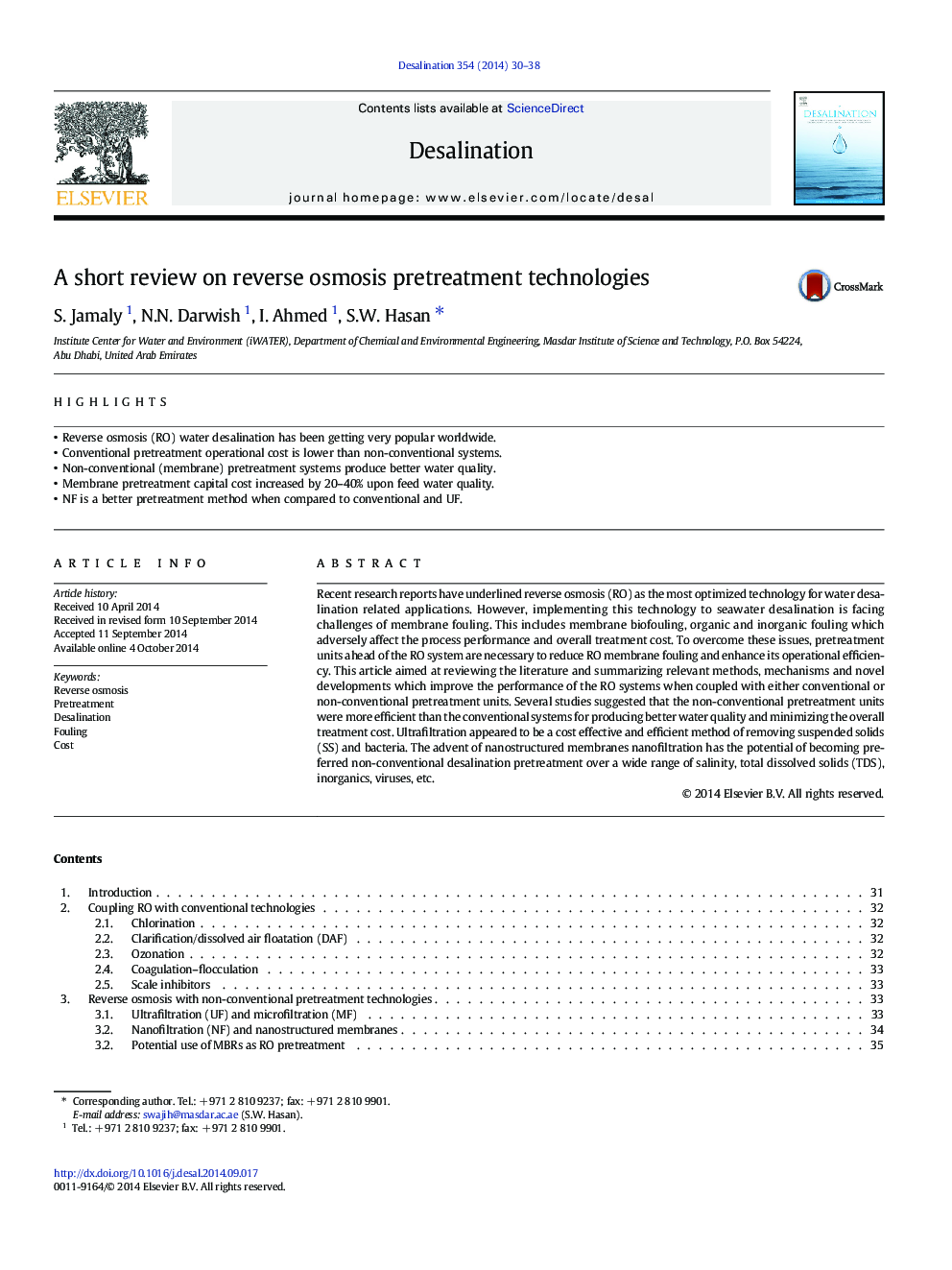| Article ID | Journal | Published Year | Pages | File Type |
|---|---|---|---|---|
| 623380 | Desalination | 2014 | 9 Pages |
•Reverse osmosis (RO) water desalination has been getting very popular worldwide.•Conventional pretreatment operational cost is lower than non-conventional systems.•Non-conventional (membrane) pretreatment systems produce better water quality.•Membrane pretreatment capital cost increased by 20–40% upon feed water quality.•NF is a better pretreatment method when compared to conventional and UF.
Recent research reports have underlined reverse osmosis (RO) as the most optimized technology for water desalination related applications. However, implementing this technology to seawater desalination is facing challenges of membrane fouling. This includes membrane biofouling, organic and inorganic fouling which adversely affect the process performance and overall treatment cost. To overcome these issues, pretreatment units ahead of the RO system are necessary to reduce RO membrane fouling and enhance its operational efficiency. This article aimed at reviewing the literature and summarizing relevant methods, mechanisms and novel developments which improve the performance of the RO systems when coupled with either conventional or non-conventional pretreatment units. Several studies suggested that the non-conventional pretreatment units were more efficient than the conventional systems for producing better water quality and minimizing the overall treatment cost. Ultrafiltration appeared to be a cost effective and efficient method of removing suspended solids (SS) and bacteria. The advent of nanostructured membranes nanofiltration has the potential of becoming preferred non-conventional desalination pretreatment over a wide range of salinity, total dissolved solids (TDS), inorganics, viruses, etc.
